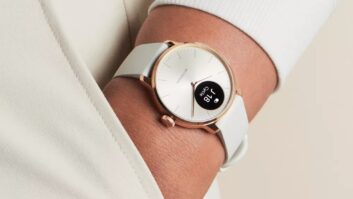Ever since a pre-emptive online ad campaign helped make the no-budget fright flick “The Blair Witch Project” a box office bonanza, major corporations from Procter & Gamble to Best Buy have been re-examining their advertising strategies with an eye toward guerilla marketing.
For the latter, that effort has led to embedding ads on TiVo hard drives, hosting offbeat entertainment Web sites, and producing public service announcements for movie-theater chains. The new approach to advertising, dubbed “viral marketing,” was prompted in part by Best Buy’s consumer centricity initiative, as well as the profusion of information channels.
“For the last three years we’ve been looking at the future of media choices,” explained Ruby Anik, Best Buy’s VP/advertising. “We’ve also been looking at customers in a more segmented way, as opposed to mass advertising and circulars.
“National TV works very well for us” — indeed, Best Buy won its first EFFIE advertising award this month for its national “Thousands of Possibilities” campaign — “but we have to look to the future,” she told TWICE. “The audience is fragmented, attention spans are short, and viral marketing allows us to draw attention without saying ‘Watch this.’ It’s our icing on the base cake.”
Anik’s viral ventures began with TiVo’s Showcase, where Best Buy placed spots heralding its gift cards, exclusives like the “Four Flicks” Rolling Stones DVD and teaser ads for the Web sites. “We’re looking at different DVR devices,” she noted, “so that we can eventually target individual homes.”
The TiVo teasers, together with targeted e-mail blasts developed from Best Buy’s burgeoning shopper database, led customers online where they learned all about the fictitious Mint Brothers (www.mintbrothers.com) and Wayne, the precocious marionette that touted wireless technology in Best Buy commercials and circulars (www.modernpuppet.com).
The humorous sites, each designed to appeal to a distinct psychographic (young males for the Mint Brothers, slightly older computing buffs for Wayne), feature faux character histories, film shorts and, on dedicated pages, product blurbs with links to BestBuy.com. “They allow us to reach our customer segments in a unique way,” Anik explained.
Best Buy has also burrowed into movie theaters, having distributed an amicable 30-second “turn off your cell phone” spot to the AMC exhibitor chain. Titled “Silence Is Golden,” it depicts a Pacific Theater scene in World War II whose battlefront quiet is shattered by the ring of a wireless phone. Over logos for Best Buy, Sprint and Samsung, the voiceover thanks the audience for “using our products,” but admonishes them to refrain from doing so during the show.
Going forward, Anik will work toward integrating all of Best Buy’s varied marketing elements while “finding new frontiers and learning how to access them.” The potential, she says, is “awesome.”












